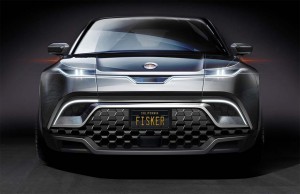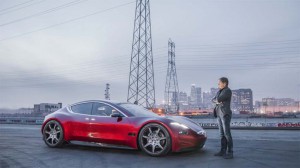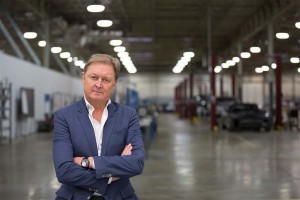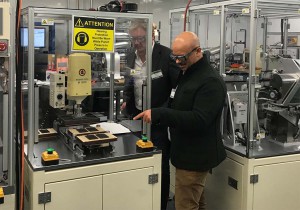
The Fisker SUV will adopt an SUV style and offer more interior space than the typical ute by placing key components under the floorboard.
Long-time automotive designer and entrepreneur Henrik Fisker is readying a challenger to the upcoming Tesla Model Y that will be ready for production during the second half of 2021 at a price of “below $40,000.”
With a range estimated at “around” 300 miles, Fisker Inc. plans to produce it at a factory in the U.S. and is currently searching for a plant site in one of eight states, the Danish-born executive told TheDetroitBureau.com in an exclusive interview. The company is putting an emphasis on acquiring an existing factory, preferably one of the many abandoned auto plants around the U.S.
“We hope to pick a site within the next eight to 10 weeks,” Fisker said, noting that a Midwest site with ready access to existing suppliers is high on the priority list, though the final choice would also be impacted by available incentives.
The factory would need to have the space to produce as many as 200,000 of the new battery-electric vehicles annually, according to Fisker, who called that “a pretty strong target.”
(Tesla debuts the Model Y SUV. Click Here to check it out.)

Fisker is delaying the launch of its Tesla Model S fighter, the EMotion, to focus on its mainstream entry.
Fisker originally made his name as the lead designer for Aston Martin with products like the DB9 sports car. He later set out to form his own car company. Just before the Great Recession he announced plans to produce a new line of plug-in hybrids, the unfortunately timed Fisker Automotive going into production in 2011, about the time the industry was struggling to reverse its biggest downturn in more than a half century. Combined with production and quality issues, Fisker Automotive went bankrupt in 2013, its assets sold two years later to a Chinese firm that recently relaunched as Karma Automotive.
The designer-cum-automotive magnate resurfaced in 2016, revealing a high-end battery-electric concept vehicle dubbed Emotion. The latest announcement moves the start-up in a different direction, focusing instead on what is expected by many observers to become the mainstream heart of the nascent BEV market.
“We decided to push back the Emotion,” he said on Monday afternoon, to focus on a vehicle that would generate significantly more volume and, despite lower margins, more revenue. The Emotion, he said, would follow, though could use an entirely different sort of battery technology.
The as yet-unnamed SUV would echo what has become the industry norm, using a skateboard-like platform with batteries, motors and other key powertrain components under the load floor. That would lower its center of gravity while also freeing up space normally devoted to the engine compartment to passengers and cargo.
Expect a “vastly spacious interior,” a statement from Fisker Inc. suggested, with”a modern aesthetic and high-quality materials.”
(Ford teases its “Mustang-inspired” all-electric SUV. Click Here for the latest.)
The vehicle will be powered by twin electric motors, one on each axle, giving it all-wheel-drive capabilities. It will draw power from an 80 kilowatt-hour lithium-ion battery pack that should yield “close to 300 miles” range, the company said, emphasizing that the SUV will put a premium on performance, much as Tesla has been doing. The new Model Y, CEO Elon Musk said last week, will be available in a performance version capable of hitting 60 in just 3.5 seconds.
“We’ve signed off on design and are in the engineering process,” Henrik Fisker told TheDetroitBureau.com, adding that a “fully drivable” prototype will be available by the end of this year.
The batteries in the new SUV will be conventional lithium-ion but could be switched later to what are commonly referred to as “solid state” batteries, a form of lithium-ion technology that replaces the gel-like chemistry inside each battery with a ceramic structure. Some experts believe solid-state batteries will become the norm by the end of the next decade, in part because they are expected to be lighter, more powerful, cheaper, faster to charge – and won’t be flammable like today’s lithium batteries.
Fisker has set up its own battery lab, the compounding founder said, and is confident enough about the technology that he believes it will be available when the bigger and more expensive EMotion launches within a year after the mainstream-priced SUV.
(Audi plans dozens of all-electric concepts and production cars. Click Here for the story.)
Whether his company can pull that off is far from certain. Most analysts don’t see solid-state batteries reaching production, especially in a form useful for automotive applications, until later in the 2020s.
While the Fisker SUV isn’t scheduled to reach market until a year or so after the Tesla Model Y, the executive is hoping it can gain an advantage over its California rival. Tesla has already crossed the sales threshold that will see the federal tax credit offered to buyers phase out by the end of 2019. Key rivals General Motors and Nissan will soon see their credits begin to disappear. The question is whether the incentive program will remain. President Donald Trump has called for it to be dropped as part of his new budget proposal, though the program has strong support on Capitol Hill.
If the new venture moves ahead, Fisker could wind up competing against himself, in a sense. The company he started recently went back into production under its new owners and will show off two new models, as well as a concept vehicle, at the Shanghai Motor Show next month.



Dream on……………
Is this the same company that started a plant in Las Vegas and then moved to (somewhere in) Arizona, or am I confusing them with someone else?